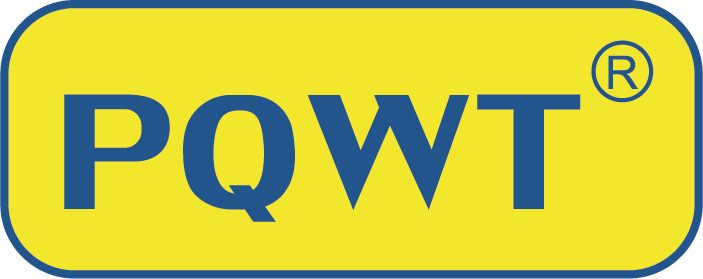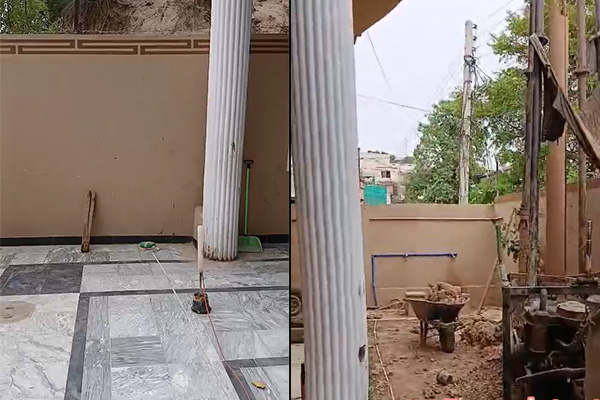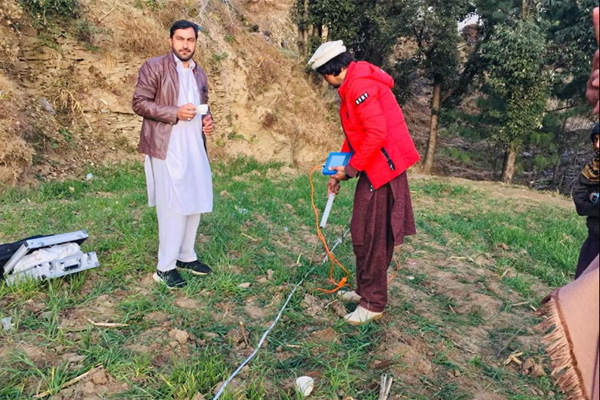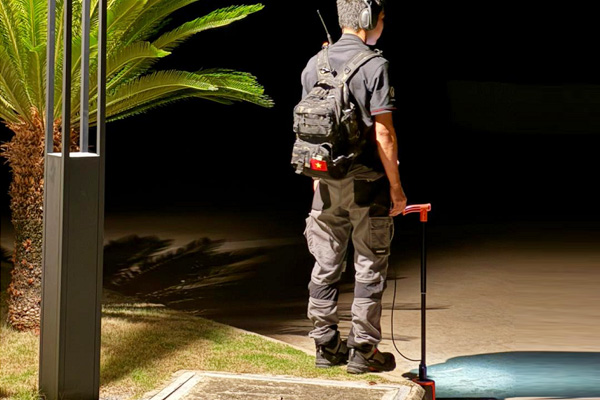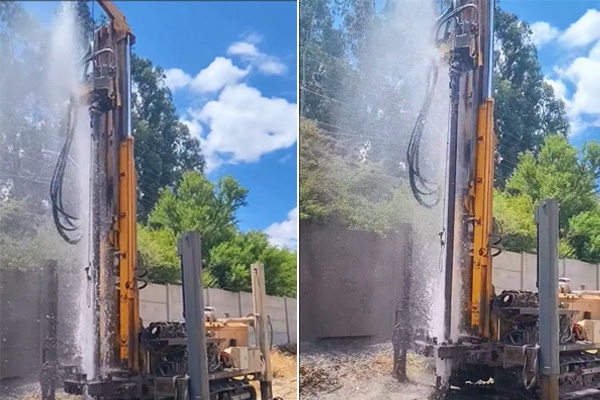Leaking pipes is a common but problematic problem, whether it's a household water mains or a city's underground water network, a leak is not only a waste of resources, but can also cause a greater safety hazard. However, with the advancement of science and technology, water leakage detection instruments have become an "artifact" to solve this problem. They can find water leaks quickly and accurately, avoiding blind excavation and wasted resources. Today, we're going to dive into the magic behind these instruments.
first、The core of water leakage detection: acoustic principle
1. Why does a water leak make a sound?
When a crack or hole appears in a pipe, water is sprayed out of the hole under pressure, rubbing against the pipe wall and creating vibrations. This vibration creates sound waves that travel through water, pipes, and the surrounding soil. The frequencies of these sound waves are usually between 20 Hz and 20 kHz, but most water leaks are of a low frequency and are difficult for the human ear to hear directly.
2. How does the instrument capture the sound of water leakage?
At the heart of a water leak detection instrument is a highly sensitive sensor (similar to a microphone) that captures the sound waves generated by a water leak. These sensors can detect low-frequency sound waves that cannot be heard by the human ear and convert them into electrical signals.
3. Signal processing and positioning
The captured sound wave signal will be amplified by the instrument and processed by built-in algorithms to remove environmental noise (such as vehicles, wind noise, etc.) and extract the characteristics of water leakage. The processed signal is presented in two forms:
Sound prompt: The technician hears an amplified water leak through the headphones, and the clearer and stronger the sound, the closer it is to the leak point.
Visualize the spectrum: The instrument converts the acoustic signal into a graph that is displayed on the screen, helping the technician to more intuitively analyze the location of the water leak.
second、Auxiliary technology: make the detection more accurate
In addition to the acoustic principle, modern water leak detection instruments incorporate other technologies to further improve the accuracy and efficiency of the inspection:
1. Pressure change detection
A leak can cause the water pressure inside the pipe to drop. By monitoring pressure changes, the instrument can assist in determining the location and severity of the water leak. For example, if the pressure in a section of the pipe drops significantly and the sonic signal is strong, it can be determined that the leak is in that area.
2. Infrared thermal imaging technology
For hidden water leaks, such as walls or under floors, thermal imaging cameras can capture temperature differences in the leaky area. Water leaks can take away the heat from the surroundings, causing the temperature in the area to be different from the surroundings. Thermal imaging cameras convert this temperature difference into visible thermal images that can help locate the problem.
3. Gas detection method
A harmless gas (such as nitrogen or helium) is injected into the pipe, and after the gas has escaped from the leakage, the instrument detects the gas concentration to pinpoint the tiny or hidden leak. This method is particularly suitable for inspecting complex piping systems or areas that are difficult to inspect acoustically.
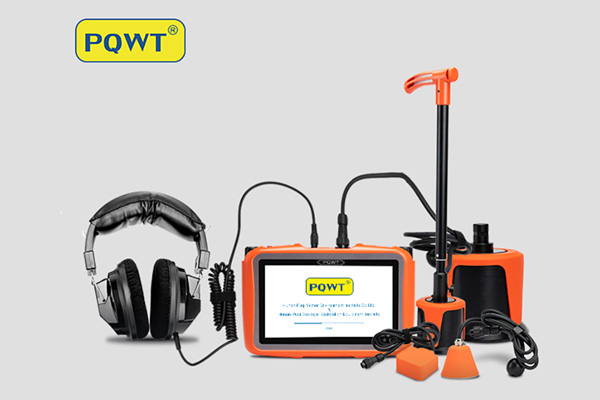
Third、Practical application: Pucci-L7000 pipeline leak detector
Taking the Pucci-L7000 pipe leak detector as an example, this equipment is widely used in water leakage detection of tap water, fire protection, heating pipes, as well as household tap water and floor heating pipes. It captures leakage sound and vibration frequencies, transmits the data to the host computer for analysis, and displays the detection results through the sound and visual spectrum. Its high sensitivity and powerful noise reduction function make it able to adapt to a variety of complex environments and find water leaks quickly and accurately.
Key features:
- High sensitivity: Able to detect faint water leakage sounds, suitable for pipes of various materials.
- Visual analysis: Visualize the leakage signal through the spectrogram for easy identification by technicians.
- Simple operation: User-friendly design, suitable for people of different skill levels.
- Adaptable: Parameters can be adjusted according to different environments to ensure detection accuracy.
Fourth、 the actual operation process of water leakage detection
Step 1: Conduct preliminary troubleshooting
Technicians first use instruments to detect the pipe's acoustic signal and determine the approximate area of the leak.
Step 2: Pinpoint the location
In the suspect area, technicians further analyze the sonic intensity and pressure changes to reduce the scope of the leak.
Step 3: Confirm the leakage point
Through repeated inspection and comparison of data, the precise location of the leak point is finally determined.
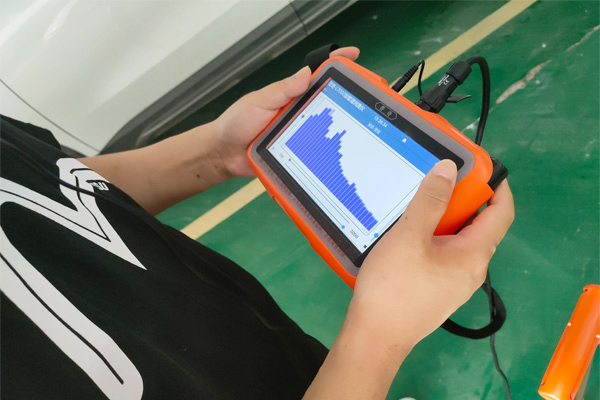
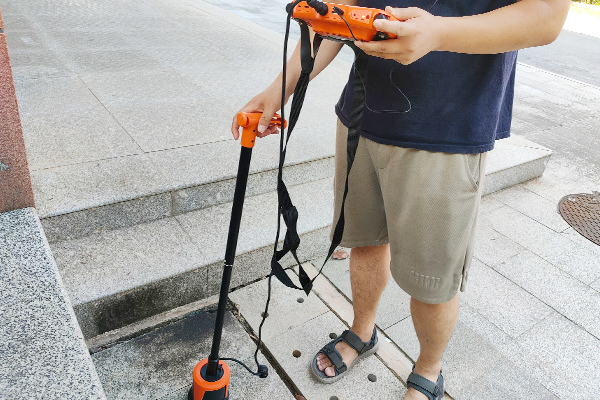
Fifth、 the significance of science and technology to catch leaks
The application of water leakage detection instruments not only solves the problems of low efficiency and high cost of traditional detection methods, but also greatly improves the accuracy of detection. Their core principle – acoustic detection, combined with auxiliary technologies such as pressure changes and infrared thermography – makes it impossible for water leaks to hide. Whether it's a small water leak in the home or a large-scale problem in a city's pipe network, these instruments can quickly and efficiently find the source of the problem, avoiding wasted resources and safety hazards.
sixth. Summary
The working principle of the water leakage detection instrument seems complicated, but its essence is to "hear" the sound of water leakage through scientific and technological means, and combine a variety of auxiliary technologies to accurately locate the problem. Their appearance not only makes water leak detection more efficient and accurate, but also shows us the great value of technology in daily life. The next time you hear a "tick" sound, think about the technological forces behind these that are solving our unseen problems.



